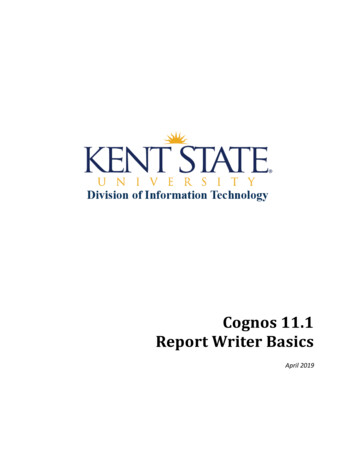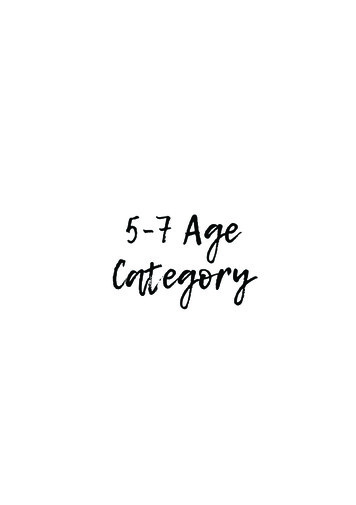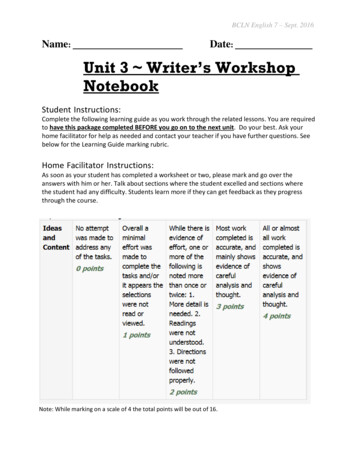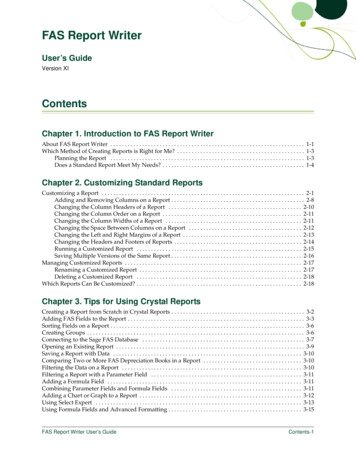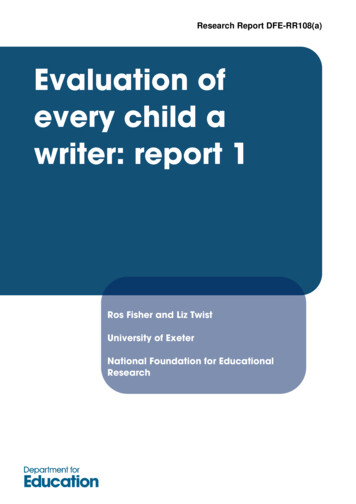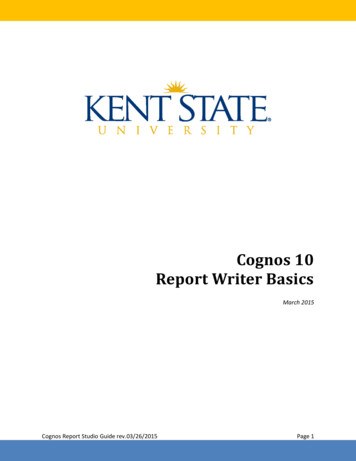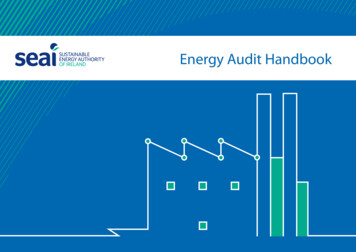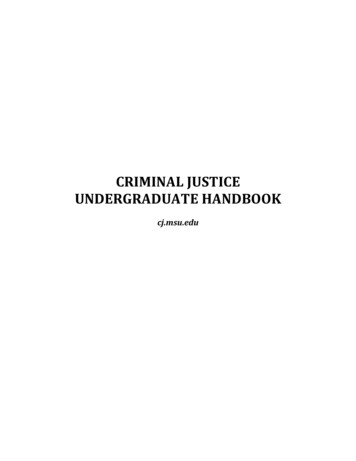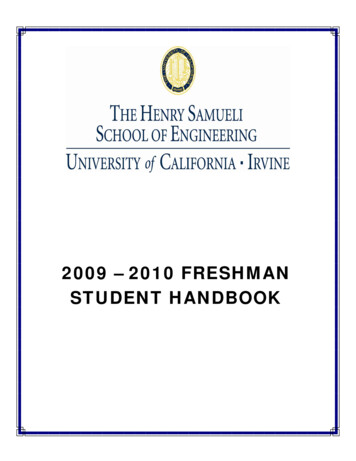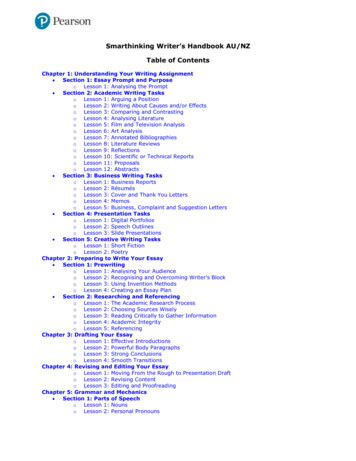
Transcription
Smarthinking Writer’s Handbook AU/NZTable of ContentsChapter 1: Understanding Your Writing Assignment Section 1: Essay Prompt and Purposeo Lesson 1: Analysing the Prompt Section 2: Academic Writing Taskso Lesson 1: Arguing a Positiono Lesson 2: Writing About Causes and/or Effectso Lesson 3: Comparing and Contrastingo Lesson 4: Analysing Literatureo Lesson 5: Film and Television Analysiso Lesson 6: Art Analysiso Lesson 7: Annotated Bibliographieso Lesson 8: Literature Reviewso Lesson 9: Reflectionso Lesson 10: Scientific or Technical Reportso Lesson 11: Proposalso Lesson 12: Abstracts Section 3: Business Writing Taskso Lesson 1: Business Reportso Lesson 2: Résuméso Lesson 3: Cover and Thank You Letterso Lesson 4: Memoso Lesson 5: Business, Complaint and Suggestion Letters Section 4: Presentation Taskso Lesson 1: Digital Portfolioso Lesson 2: Speech Outlineso Lesson 3: Slide Presentations Section 5: Creative Writing Taskso Lesson 1: Short Fictiono Lesson 2: PoetryChapter 2: Preparing to Write Your Essay Section 1: Prewritingo Lesson 1: Analysing Your Audienceo Lesson 2: Recognising and Overcoming Writer’s Blocko Lesson 3: Using Invention Methodso Lesson 4: Creating an Essay Plan Section 2: Researching and Referencingo Lesson 1: The Academic Research Processo Lesson 2: Choosing Sources Wiselyo Lesson 3: Reading Critically to Gather Informationo Lesson 4: Academic Integrityo Lesson 5: ReferencingChapter 3: Drafting Your Essayo Lesson 1: Effective Introductionso Lesson 2: Powerful Body Paragraphso Lesson 3: Strong Conclusionso Lesson 4: Smooth TransitionsChapter 4: Revising and Editing Your Essayo Lesson 1: Moving From the Rough to Presentation Drafto Lesson 2: Revising Contento Lesson 3: Editing and ProofreadingChapter 5: Grammar and Mechanics Section 1: Parts of Speecho Lesson 1: Nounso Lesson 2: Personal Pronouns
o Lesson 3: Demonstrative, Relative, Reflexive and Indefinite Pronounso Lesson 4: Verbso Lesson 5: Adjectiveso Lesson 6: Adverbso Lesson 7: Prepositionso Lesson 8: Articles and Other Determinerso Lesson 9: Conjunctions Section 2: Usageo Lesson 1: Subjectso Lesson 2: Count and Noncount Nounso Lesson 3: Gerundso Lesson 4: Pronoun-Antecedent Agreemento Lesson 5: Predicateso Lesson 6: Subject-Verb Agreemento Lesson 7: Simple Verb Tenseso Lesson 8: Progressive and Perfect Verb Tenseso Lesson 9: Using Verb Tenses Correctlyo Lesson 10: Being and Linking Verbso Lesson 11: Irregular Verbso Lesson 12: Helping Verbso Lesson 13: Infinitiveso Lesson 14: Participles Section 3: Mechanicso Lesson 1: End Punctuationo Lesson 2: Colonso Lesson 3: Semicolonso Lesson 4: Commaso Lesson 5: Apostropheso Lesson 6: Quotation Markso Lesson 7: Hyphens and Bracketso Lesson 8: Capitalisationo Lesson 9: Spelling Strategies Section 4: Sentence Structureo Lesson 1: Independent and Dependent Clauseso Lesson 2: Sentence Typeso Lesson 3: Incomplete Sentences: Fragmentso Lesson 4: Comma Splices and Run-onso Lesson 5: Parallel Structureo Lesson 6: Using Modifiers PreciselyChapter 6: Writing Styleo Lesson 1: Building Your Writing Styleo Lesson 2: Point of Viewo Lesson 3: Consistent Tone and Voiceo Lesson 4: Word Choiceo Lesson 5: Formal and Informal Languageo Lesson 6: Wordinesso Lesson 7: Active and Passive Voiceo Lesson 8: Choosing the Right Subjecto Lesson 9: Figurative LanguageAppendixo Glossary of Writing Termso Top 10 Mechanical Concernso Common Homophones and Homonymso Harvard Styleo APA Styleo References
Chapter 1: Understanding Your Writing AssignmentSection 1: Essay Prompt and PurposeAnalysing the PromptChapter 1, Section 1, Lesson 1Completing a writing assignment involves many steps, and the first step should usually consist ofanalysing the assignment prompt. This step involves reading the assignment instructions carefully todetermine how they apply to various parts of the final draft. The assignment instructions for an essaymay not explicitly say how to organise and develop your ideas, but they usually include keywords andclues that can help you figure out which pattern of development and types of details are appropriate.Before writing a draft, determine the requirements and/or your best options for each of the followingaspects of writing the essay: Essay LengthMain TopicIntroductionBody Paragraph TopicsSupporting EvidenceFormatting and ReferencesConclusionThe following sections describe how to analyse an assignment prompt and how the prompt mightaffect each of these aspects of an essay.Essay LengthInstructions or assignment prompts may specify the required length in one of two formats: a pagerange or a word count. The length requirements are important because they can help you to decidehow many paragraphs to include in your draft, which will help you to plan your body paragraph topicsbefore writing. In a typical academic essay, each paragraph is usually ½ to ¾ page in length becausethe ideas should be well-developed. To determine how many paragraphs your essay might include,you can use the page range or word-count requirements as follows. Page range: Divide the number of required pages by .75 (because each paragraph could beup to ¾ of a page). For example, a three-page essay will usually consist of five well-developedparagraphs. A proactive approach might be to plan six paragraph topics to ensure that thereare enough ideas to develop and to later omit your least-favourite body paragraph topic if thedraft is at risk of exceeding the maximum length.Word count: Some assignments do not specific page requirements but rather a word count.In this situation, use the word count to determine the required number of pages. A typical,double-spaced page of typing is 300 words. If you divide the word count by 300, you can get arough estimate of how many pages the essay should include and get a general idea of howmany paragraphs you might plan.Main TopicMany assignments will specify a topic, but some assignments will allow you to choose a topic within abroader topic or set of parameters. When you receive the assignment, make sure that you understandwhat specific topic or type of main topic is required. The following examples demonstrate thedifference between prompts that establish the main topic for you and prompts that allow some choicewithin a broader category.Prompts that Specify the Main Topic: Critically assess several research-based practices that parents can use to help their childrenbecome effective regulators of their own emotions. 2000 words. APA style. (Each studentcompleting the assignment will write about practices for helping children regulate emotions.)
Should police have tertiary qualifications? Why or why not? (The assigned task is to eitherdefend reasons why police should have tertiary qualifications or reasons why police should nothave tertiary qualifications.)Is surveillance of the Internet effective? (The assigned task is to either defend reasons whysurveillance is effective or reasons why surveillance is not effective.)Prompts that Involve Choosing a Main Topic: Choose a technology applicable to Human Resources and analyse how it impacts the efficacyof one HR goal or task. (The writer will choose a specific technology and an HR goal or task forwhich the technology is used.) Describe a potential research project to investigate an engineering problem. (The student willchoose both the engineering problem and a research project.) Analyse the development of the protagonist in a work of short fiction from the courseanthology. (The writer may choose any story from the course anthology and will write aboutthe main character.)IntroductionAfter you determine the main topic requirements, you might also consider how the assignmentrequirements should affect your essay’s introduction. The introduction should usually include asentence that summarises your main idea or purpose (often referred to as a thesis statement), but itshould usually also include the background information that readers need to know about the topic. Forexample, in an essay that analyses a character in a short story of the writer’s choosing, the writershould identify the story’s author, title, premise and main character before stating a main idea abouthow the character has changed.An assignment prompt might also include a list of questions to answer in the essay, and one of thosequestions might be most appropriate for the introduction. When you see a list of questions, check tosee if the first one or two apply to background information as opposed to questions that apply more tothe body of the essay. For example, suppose the assignment prompt said this: Reflect on an eventduring your practicum when you demonstrated effective communication with a patient. What was themain context or premise for the interaction? Which of the communication techniques did you use, andhow are those techniques supported by the theories we have studied? How confident are you aboutcommunicating effectively with future patients? An appropriate place to answer the question about thecontext or premise is the introduction. The second question applies more to the body paragraphs, andthe last question applies to the conclusion.Body Paragraph TopicsAfter you determine the main topic requirements, you can begin to decide what types of bodyparagraph topics are appropriate. For some assignments, all of the body paragraphs will fall into thesame rhetorical mode, such as arguing a position or describing effects. For example, if an assignmentprompt requires you to argue whether surveillance of the Internet is effective, then each bodyparagraph should probably defend a separate reason for your opinion. Therefore, you could startworking on your assignment by choosing a few separate reasons to research and develop later in thefirst draft of your essay. The following examples show how assignment prompts can help you todetermine the most appropriate types of body paragraph topics for assignments that use one mainpattern of development or rhetorical mode.Critically assess several research-based practices that parents can use to help their children becomeeffect regulators of their own emotions. Introduction First practice Second practice Third practice Fourth practice Conclusion
Choose a technology applicable to Human Resources and analyse how it impacts the efficacy of oneHR goal or task. Introduction First effect Second effect Third effect Fourth effect ConclusionThese examples each include spaces where a student could plan four body paragraph topics, but thisnumber is for demonstration purposes only. The required length should ultimately affect your decisionabout how many body paragraph topics to plan and develop.Other more complex essay assignments might require you to include more than one type of bodyparagraph topic. Consider how the following prompt corresponds to an essay plan.Write a summary report of the listeria outbreak that includes the history, microorganism’s role,implications to communities, and methods for control and prevention. Introduction History of the outbreak The microorganism’s role in the outbreak First implication for communities Second implication for communities First method of control and prevention Second method of control and prevention Third method of control and prevention ConclusionIn this example, the writer used each required category of body paragraph topics as well as priorknowledge of the topic to decide how many paragraphs might be needed to develop each part of theassignment.Supporting EvidenceIn any academic essay, each body paragraph should include evidence to support or develop each bodyparagraph topic. Academic assignments will usually require that evidence to come from credible orscholarly sources and perhaps even your required course texts. After you determine what types ofbody paragraph topics are required, determine what type of evidence your essay should include andwhere you might begin looking for that evidence. You might even jot down a list of objectives for eachbody paragraph to achieve. For example, a student whose assignment is to critically assess severalresearch-based practices that parents can use to help their children become effect regulators of theirown emotions could plan the following objectives for each body paragraph: Identify one research-based practice.Describe what actions or steps the practice involves.Explain how well (critically assess) the practice leads to the desired outcome (regulatingemotions).Formatting and ReferencesIf your assignment instructions specify APA, Harvard, Chicago or MLA, the finished product shouldfollow those formatting and referencing guidelines. When one of these styles is required, make surethat you understand how that affects formatting aspects, such as the title page, page numbering, fontsize, spacing and so forth. You can usually apply the formatting during a later stage of the writingprocess; however, you will want to apply the referencing requirements during the drafting stage of thewriting process.Referencing requirements determine how you give credit to outside sources when you quote orparaphrase other writers’ ideas. For example, if you are using Harvard or APA, you will want
to cite the author(s) and year(s) of publication each time you paraphrase ideas and the author(s),year(s) and page(s) each time you use a direct quotation. This is helpful to know before writing a draftbecause you may want to keep a research log as you read outside sources and gather evidence. If youkeep a list of ideas you want to quote or paraphrase in the draft, it will be helpful to record theinformation you need for referencing each paraphrase or quotation.ConclusionBefore writing a draft, you might also consider how the instructions should affect the conclusion. Acommon practice with conclusions is to summarise the ideas you will have covered in the bodyparagraphs and connect your topic to a larger purpose or context. Some assignment prompts includea list of questions, and one of those questions might apply to the conclusion. An assignment promptmay also provide specific instructions for the conclusion. For example, suppose the assignment promptsaid this: Reflect on an event during your practicum when you demonstrated effective communicationwith a patient. What was the main context or premise for the interaction? Which of the communicationtechniques did you use, and how are those techniques supported by the theories we have studied?How confident are you about communicating effectively with future patients? An appropriate place toanswer question How confident are you about communicating effectively with future patients? mightbe the conclusion.Think About It How long should the final draft be, and how many paragraphs might that entail?What main topic is required, or what topic choices are appropriate?What type(s) of body paragraph topics are appropriate?What type of evidence should you gather for each body paragraph?How should you introduce the topic in your introduction?What type of closure or summary should you provide in the conclusion?When writers consider these questions before they start to write, the writing process tends to go moresmoothly.Back to Table of ContentsChapter 1, Section 2: Academic Writing TasksArguing a PositionChapter 1, Section 2: Lesson 1Arguing a position is the most common task in academic writing. Many essay assignments will requireyou to defend a position with a variety of logical reasons. The positions that you may be asked todefend should usually be debatable. Some assignments may require you to focus exclusively ondefending a position while other complex assignments may entail defending a position in addition toother writing tasks. Argument tasks can take many forms, such as the following: Evaluating the effectiveness or safety of a current policy or program (e.g., Critically assess theimpact of 1:1 laptop initiatives on writing assessment for adolescent learners or How well doesthe Atkins diet meet the Australian Dietary Guidelines?)Defending a position about whether a requirement or law should be in place (e.g., Shouldpolice have tertiary qualifications?)Assessing the validity or accuracy of a theory (e.g., Does the platform economy theoryaccurately reflect the current nature of the retail industry?)The discussion below covers the main strategies and essay components that work well for arguing aposition.
Essay StructureDefending a position usually involves developing a separate body paragraph for each of your reasonsor lines of argument. You can start preparing for your argument essay or the argument portion of alonger essay by choosing (1) the main argument and (2) a few specific reasons why the argument isjustified or valid. Your reasons should detail why readers should support your position. Planning yourlines of argument before writing a first draft can make the drafting process easier. Below is anexample of how one might plan lines of argument for the assignment prompt Critically assess theimpact of 1:1 laptop initiatives on writing assessment for adolescent learners.Main Argument: The use of 1:1 laptop initiatives has positively impacted several aspects of writinginstruction and assessment for adolescent learners.Essay Structure: Introduction Historical overview of using 1:1 laptops for writing assessment How laptops improve engagement via multi-media content How laptops expand the range of possible writing assessments How laptops facilitate student participation in the writing process How laptops enable educators to deliver personalised feedback How laptops improve access to academic support services ConclusionWhen planning your lines of argument, consider the best way to order them in the body of the essay.For example, do you want to place your most compelling or significant reason first or last? In additionto planning your lines of argument before writing, you might ask a tutor or your lecturer for feedbackabout your essay plan.Introduction ParagraphMost argument essays begin with an overview of the topic and the debate, convincing readers that thedebate is significant enough to consider. This background information might demonstrate yourfamiliarity with the debate. You might begin the introduction by describing the immediate relevance ofyour topic and then indicate how or why people within a certain population or discipline might takedifferent stances on that topic. For example, one might explain that educators and policy makers mustweigh the costs versus benefits of 1:1 laptop initiatives, explaining how professionals view the impactof laptops on student writing outcomes. For many topics, it can be helpful to summarise the debatebefore stating your own specific stance.By the end of your introduction, your specific stance should be clear. For example, this sentencesummarises a writer’s view on the debate about laptops: The use of 1:1 laptop initiatives haspositively impacted several aspects of writing instruction and assessment for adolescent learners. Thissentence is often referred to as a thesis statement. For complex topics, you may need more than onesentence to summarise your main argument.Body ParagraphsThe reasons or lines of argument make up the foundation of an effective argument. Unless yourassignment says otherwise, most of the body paragraphs should focus on reasons why your position isvalid. Each reason usually needs to be developed in a separate section or body paragraph. (For anessay that is five pages or less, you can probably develop each reason in a single paragraph.) Oneway to develop these types of body paragraphs is by following a three-step process: Begin the body paragraph with a sentence that states the reason the paragraph will develop. Acommon term for this first sentence is a ‘topic sentence’. For example, the first line of argumentabout laptops could begin with the following topic sentence: one way in which laptops positivelyimpact student learning is by providing access to multi-media prese
Choose a technology applicable to Human Resources and analyse how it impacts the efficacy of one HR goal or task. (The writer will choose a specific technology and an HR goal or task for which the technology is used.) Describe a potential research project
